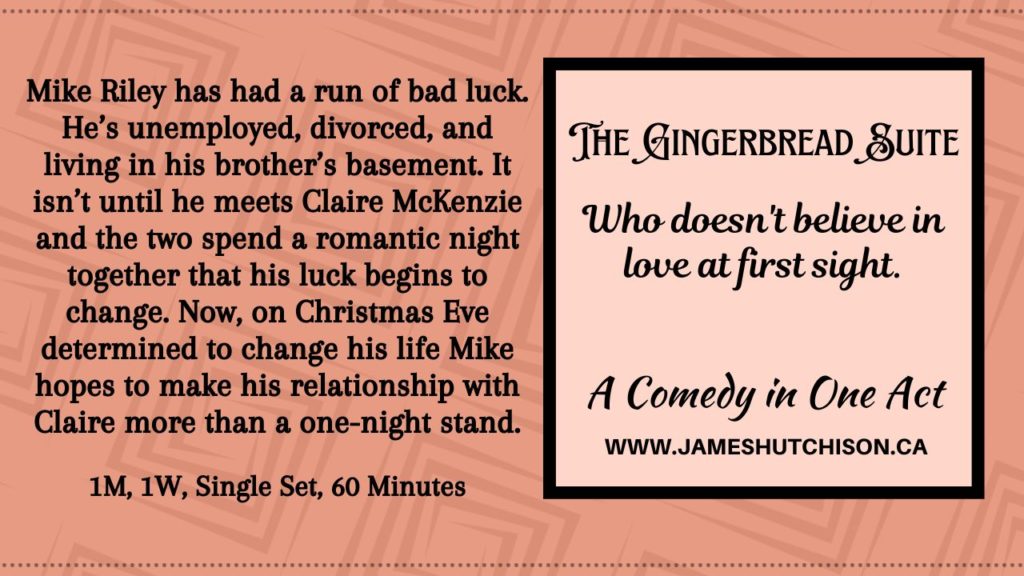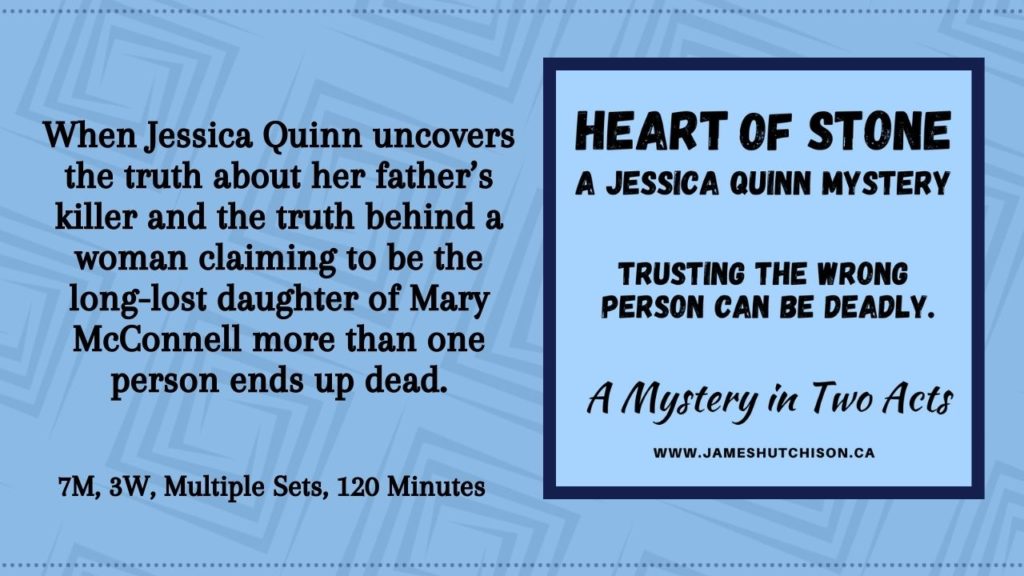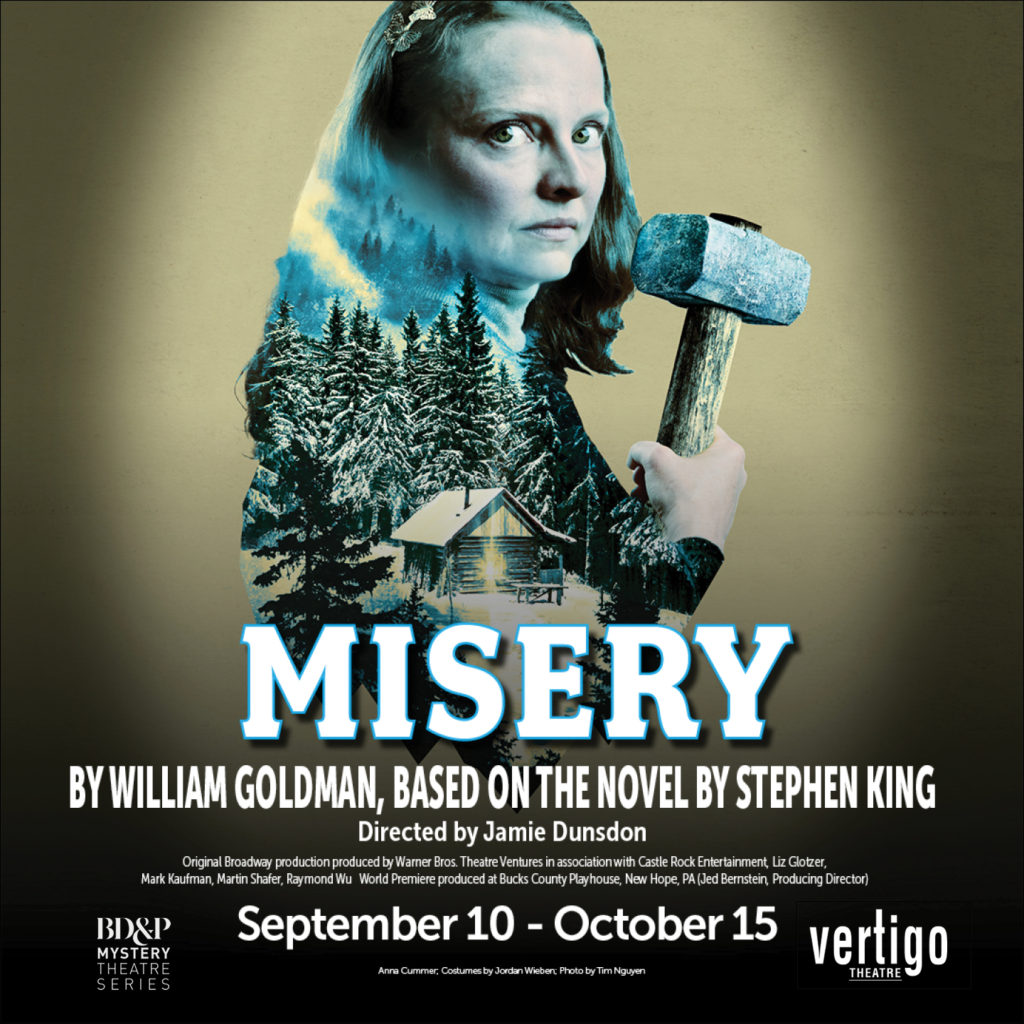
Vertigo Theatre kicks off their 46th Season with a spine-chilling production of Misery based on the novel by Stephen King and adapted for the stage by William Goldman. Goldman also wrote the screenplay for the 1990 movie starring Kathy Bates and James Caan.

When romance novelist Paul Sheldon is rescued from a car crash by his “number one fan” Annie Wilkes – he feels lucky to be alive. As Paul slowly recovers from his injuries in Annie’s isolated home, Annie reads Paul’s latest novel and discovers to her horror that Paul kills off Misery – her favourite character. That’s when Annie’s obsession takes a dark turn, and she forces Paul to write a new novel that brings Misery back to life. In a perilous game of survival, Paul works on the new novel while plotting his escape from the menacing and unpredictable Annie Wilkes.
Misery stars Anna Cummer as Annie Wilkes, Haysam Kadri as Paul Sheldon, and Curt McKinstry as Buster and I’m happy to report that Vertigo’s production of Misery is a thrilling dive into the scary world of deadly obsession. Everything you want in a psychological thriller is here including phenomenal performances, an incredible set, atmospheric lighting, a chilling soundscape, and plenty of big payoffs all under the gifted direction of Jamie Dunsdon.
I sat down with Jamie to talk with her about Misery, and I started our conversation by asking her what is it about Annie Wilkes that makes her such a compelling and menacing character.
JAMIE DUNSDON
What makes her so compelling is that she’s so human. She feels so real. She’s not a villain. She’s not Moriarty. She’s broken is what she is. She’s a normal human being. She’s someone who has had hurt in her life and pain in her life, and she just used the wrong means to cope with it and that led to an obsession which led to fanaticism.
And for her, this is a love story. For Paul, this is a survival story. She’s entering this story from a much different angle than everyone else. And then she can snap on a dime, which makes her unpredictable and frightening and complex.
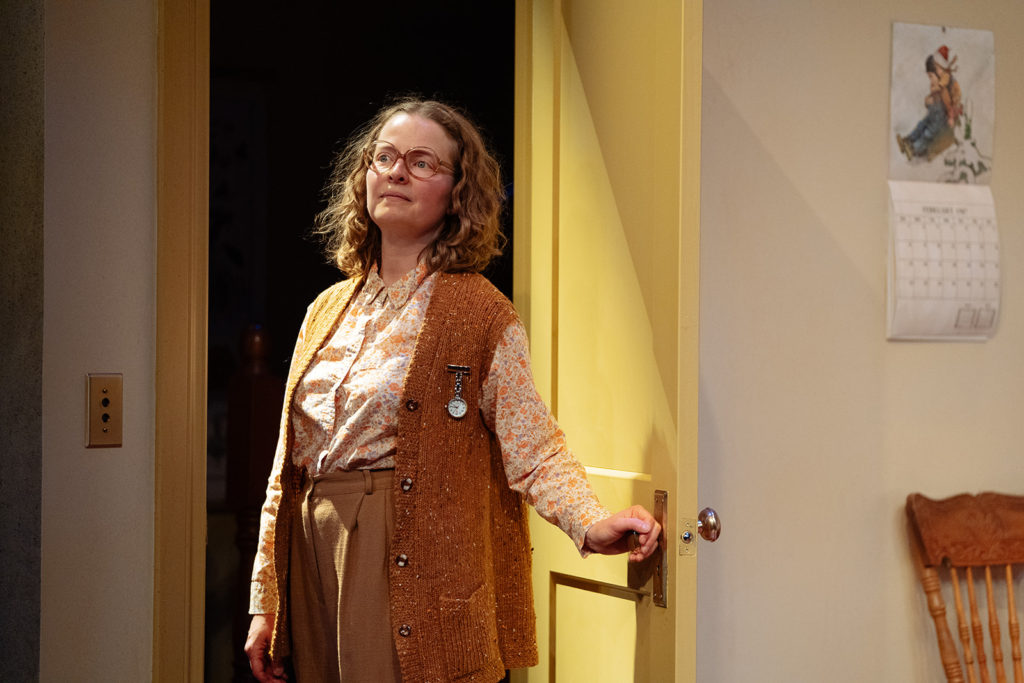
JAMES HUTCHISON
You’ve got a wonderful cast with Anna Cummer as Annie Wilkes and Haysam Kadri as Paul Sheldon. Tell me a little bit about how these actors are bringing these characters to life and what we can expect as an audience.
JAMIE
When I was casting, I didn’t want a Kathy Bates impersonation. It was about finding a person who could bring complexity to this character. I think it’s easy to look at a character like Annie Wilkes and just play a psychopath. I wanted an actor who could enter her from a human angle. And I felt the same way about the Paul character. I didn’t want a James Caan impersonation. I didn’t want someone to do the same thing that he did.
We’re not trying to do an impersonation of the film, even though this is an adaptation of the film more than of the novel. We are trying to honour what audiences want from the Misery story while also giving them something that’s a little more rounded and a little more complex. So, Anna and Haysam bring something that’s really beautiful to the characters. They bring their years of theatre experience and playing real rounded human characters, so these characters on stage feel like people you could know, and that’s mesmerizing to watch.
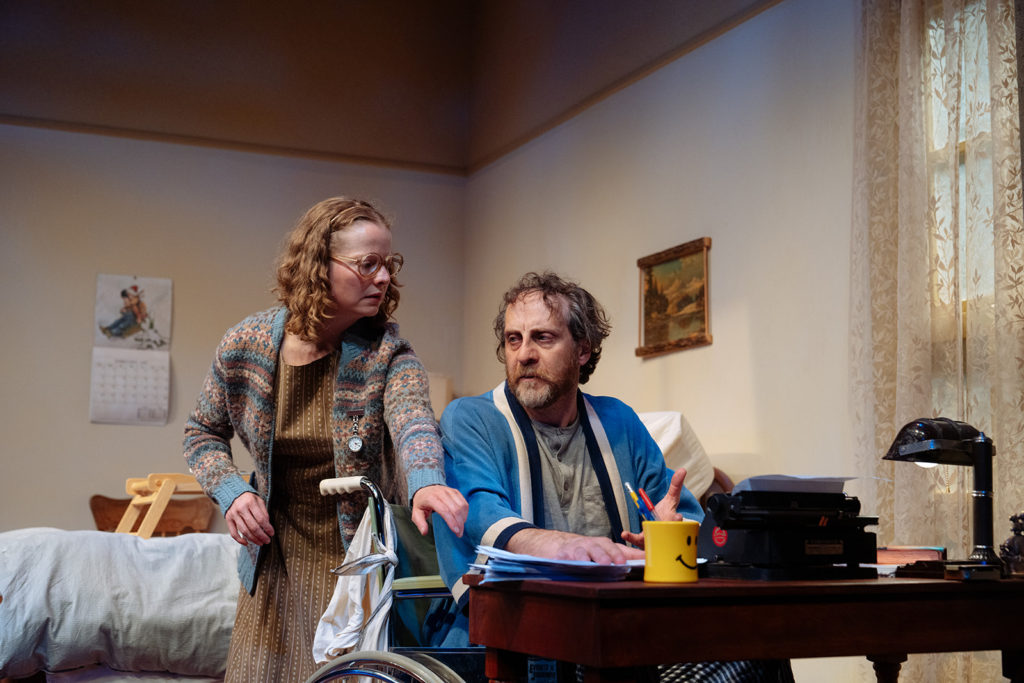
JAMES
You know, one of the most chilling aspects of the story is the fact that there actually have been fans who have stalked and killed the very people they claim to admire and love.
JAMIE
I know.
JAMES
That’s what’s so strange about humans, right, how that love can twist into hate. And I wonder what do you think it is about human nature that makes some people travel down that dark path of obsession and violence?
JAMIE
I’m not sure what makes them go down that path. I think people who have trauma and then live with that trauma on a loop in their head are looking for coping mechanisms and that can make the mind do dangerous things.
And then I’m guessing what happens with obsession is there’s a shift in the concept of ownership. I think a lot of fans feel ownership over the thing that they love, and when that ownership gets carried to its furthest logical conclusion ownership means control, and ownership means they have a right to control the subject or the object of their fascination and fanaticism. I think objectification and ownership is probably where the shift happens in their mind.
But what makes people go down that path? I’m not sure.
In our production, we’re playing with what happens when people get traumatized. What’s going to happen to Paul Sheldon if he lives through this experience? Is he going to be a different person on the other side? Is he going to be a different person in the same way that Annie is clearly a different person than the child she was? Something happened to her and her past made her who she is.
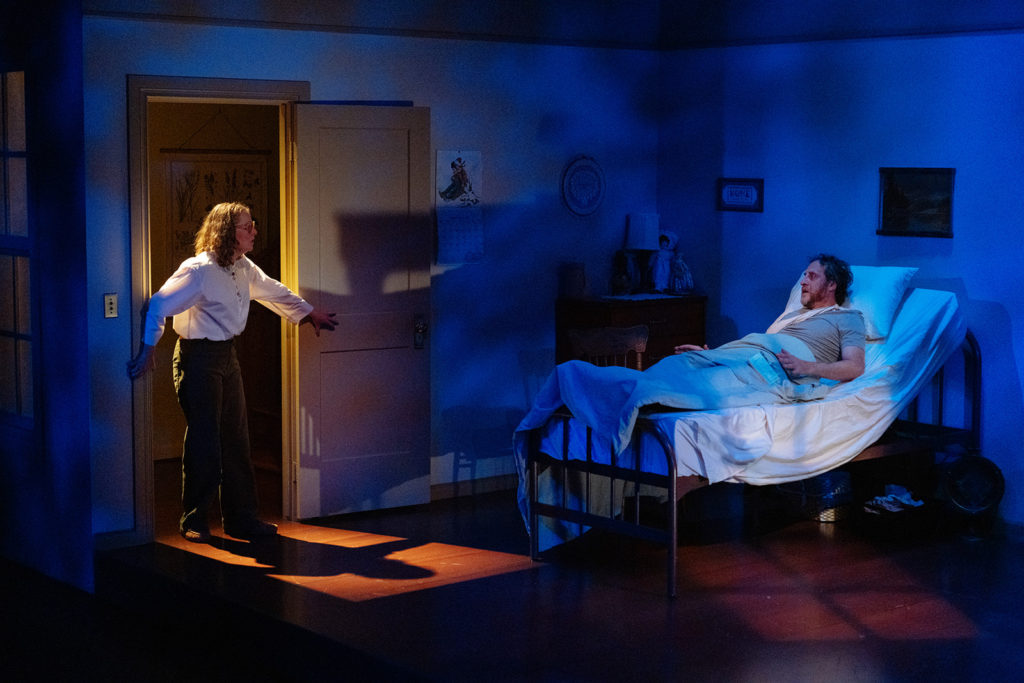
JAMES
In the play, Paul doesn’t give up. He’s resourceful. He’s trying to figure his way out of this situation. So why doesn’t he give up? What keeps him going? What do you think the story says about our desire to fight and survive?
JAMIE
In the novel, he kind of does give up. There are some significant moments in the novel where he wishes for death. We don’t go quite that far in the play, although we hint at it. I think what happens and what pushes him through is probably that Paul gets broken down into the animal version of himself, and that animal instinct to survive.
And the other thing is, he’s got something to fight for. Being locked in this little room changes him. It makes him a better person in a lot of ways. Trauma tends to make someone either a better or a worse version of themselves. And so, I think, he gets a new outlook on the world, and that gives him something he’s trying to escape for. He has a different perspective about his life as a writer and the characters he writes about and a deeper love of the work he’s done. I think he is transformed by this experience.
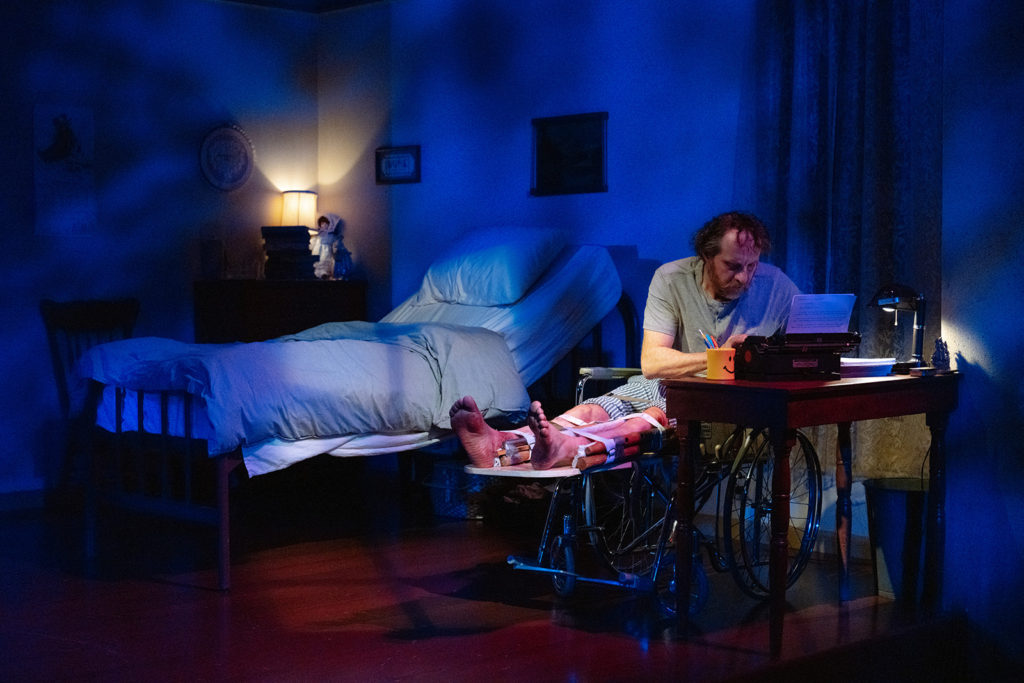
JAMES
A theatre production involves all kinds of elements and talented people working on those aspects of a production. What are some of the elements you’re bringing together in terms of set design, lighting, sound, costumes, and makeup and how are you using some of those elements to tell the story?
JAMIE
This adaptation of Misery was commissioned by Warner Brothers for a Broadway production, and they pulled out all the stops. They put Warner Brothers’ money into it. The play is massive. And the team at Vertigo has pulled out all the stops as well. They’ve really embraced the challenge.
We’ve got special effects. We’ve got fire. We’ve got guns. We’re using light in a sort of cinematic way. And Scott Reed is doing my set for Misery which I’m really lucky for because the set for this show is very demanding. How do you create a claustrophobic space on stage while also allowing for all the other things that need to happen inside the house? I won’t spoil it, but Scott’s given us a really beautiful mechanism to work with that allows us to travel through the house but to also feel the claustrophobia of Paul’s room.
Misery can feel like a small story. It can feel like a little two-hander, but the scale of this production is pretty massive. I made a list of every special effect in the show and every unusual bit of combat and choreography, and production challenges, and I think that every production challenge that has ever existed in theatre is in this play. Except for bubbles, maybe.
JAMES
Is it too late to add the bubbles?
JAMIE
No, it’s not too late. I’ll look for a place. Just for you.
JAMES
Excellent.
JAMIE
I think audiences are in for a treat. It’s not spectacle for the sake of spectacle. It’s all there to serve the story. Some of the special effects are really tiny and you wouldn’t even think of them as special effects, but they’re special effects to us because they require special technology or a special prop. There are a lot of tricks that we have to do in this production to make things possible.

JAMES
There are lots of different schools of thought about approaching directing and putting on a show and I’m curious to know how you describe your own approach to directing and whether or not you follow any particular philosophy or process or method.
JAMIE
I don’t have a process. In fact, my approach or my process is to not have a process. I was trained with a process. I did my masters in directing and so I learned a process. I learned an approach to tackling plays, but over the last fifteen years of my directing career, I found that when you try to paste a process on top of any given project you’re asking that project to fit within a previously held set of parameters. And that doesn’t work. Every play means something new. So, my approach is to learn what kind of director I need to be for each project.
So, for this cast, for example, I’ve worked with Haysam and Anna and Kurt McKinstry who is in the show as well. I’ve worked with them all before. I know them as actors. I trust them as actors implicitly. And they trust me. We have a really great relationship.
So, we do table work at the beginning and we did some table work on this, but back in my early days of directing, I would have felt the need to write down our objectives for every scene. And today I’m much more like – okay we can talk about our objectives, but we’re not really going to know everything until we’re up on our feet. So, there’s a lot more fluidity than there used to be in my process. There’s a lot more responsiveness to the needs of the moment. So, my approach to directing is to be responsive rather than prescriptive.
JAMES
Is there something about the play or directing or theatre you never get asked that you’d love people to know about?
JAMIE
I would love people to know about the role of the stage manager because most people don’t know what the stage manager is, and the average audience member will never know who that person is or how they exist in the world of the play if the stage manager is doing their job.
And on this show, we have a team of stage managers that are holding this thing up. Every moment they are running around backstage doing things and getting things ready. Meredith Johnson is my lead stage manager, and I often joke that the best-kept secret in Calgary is that the best director in town is Meredith Johnson. She’s a hero and a consummate artist, and without her artistry a show like this wouldn’t work. And it is artistry. There’s timing. There’s finesse. There’s an element of directing in stage management. The true hero of productions like this one are the stage managers.
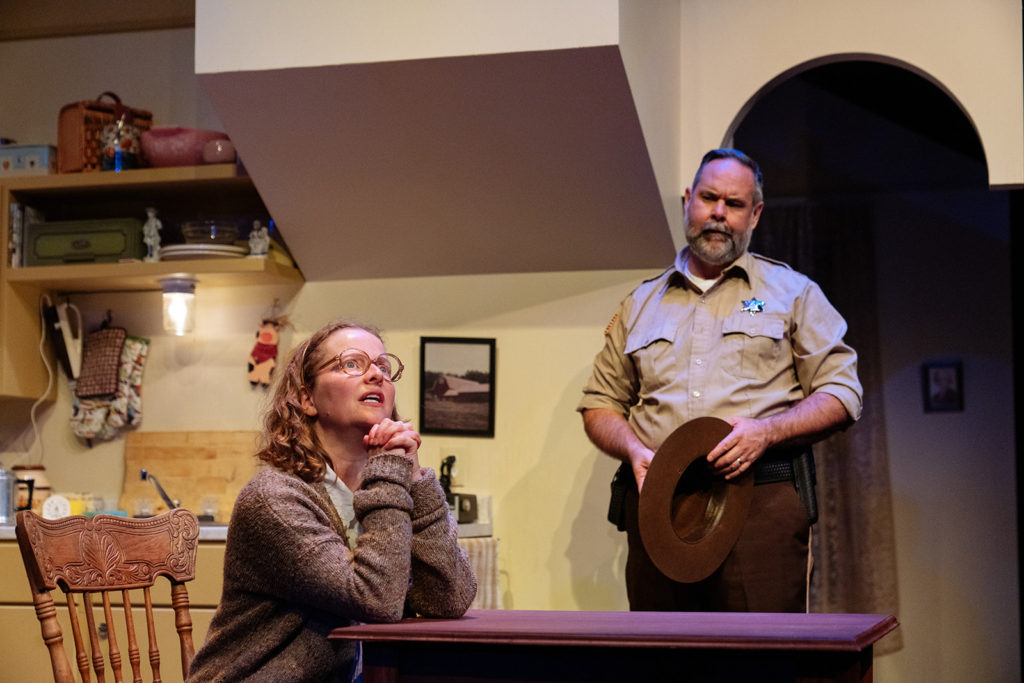
JAMES
I’m going to go back a couple of years. Back in March of 2020, you were directing a production of Admissions by Joshua Harmon for Theatre Calgary. I think it was just about to open or it had just opened and then COVID hit.
JAMIE
It was about to open the next day.
JAMES
And you had to shut it down and here we are now September 2022. Two and a half years later. I’m curious about two aspects. First, what was it like having to close that show and then what’s it like coming back with a full production now? And I’m curious to know how do you think COVID has impacted the theatre world and you as an artist.
JAMIE
Not being able to open Admissions was one of the most painful things I’ve gone through in my career. We got so close. It was a show I was proud of. It was a show that was doing really well in previews. I feel like it was all this unfulfilled potential energy that was suspended and never got released. So, I have a lot of sadness about the fact that show never opened, and it was a show that not only got postponed but they chose not to bring it back in the end. So, it’s deeply sad for me, and I carry a lot of sadness about that project.
I think a lot of theatre artists have experienced that in the last couple of years, and it’s made them question why they do theatre. There’s a lot of pain in this industry right now. We’ve seen ourselves get shut down and locked away and so now that we’re coming back what I’m seeing is this real joy of being in a room with people that you trust and you want to create with again, and that’s really beautiful and more beautiful than it used to be because we’re aware of how special it is, and we’re more aware of the ritual of live theatre – of the empathetic ritual of coming together in a space to experience things together.
***
Misery stars Anna Cummer as Annie Wilkes, Haysam Kadri as Paul Sheldon, and Curt McKinstry as Buster. Katherine Fadum is the understudy for this production. Misery is directed by Jamie Dunsdon, Set Design by Scott Reid, Costume Design by Rebecca Toon, Lighting Design by Anton deGroot, Sound Design & Composition by Dewi Wood, Fight Direction by Karl Sine, Stage Management by Meredith Johnson, Carissa Sams and Michael Luong.


